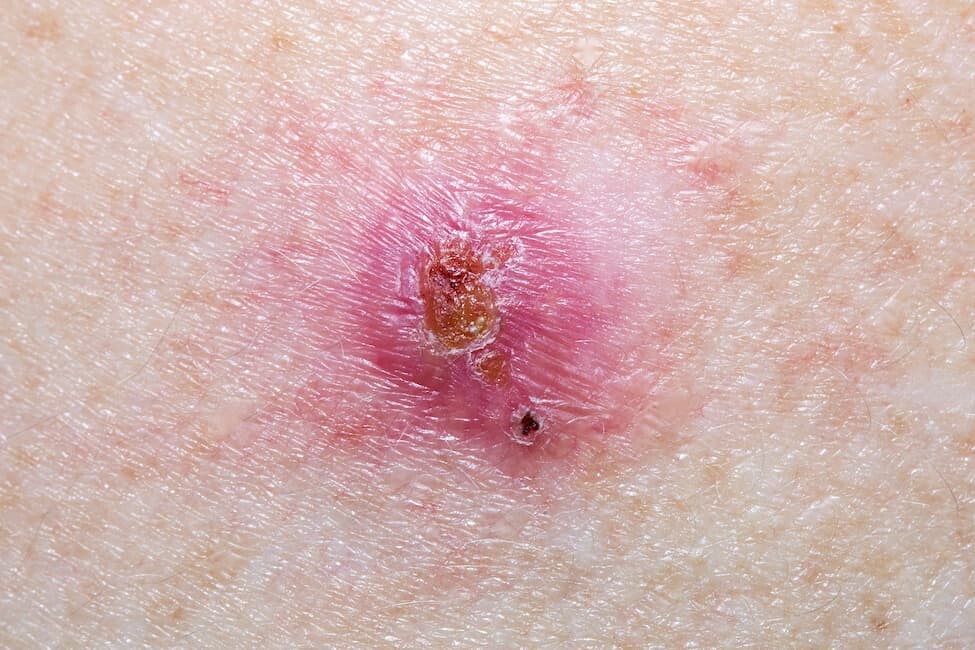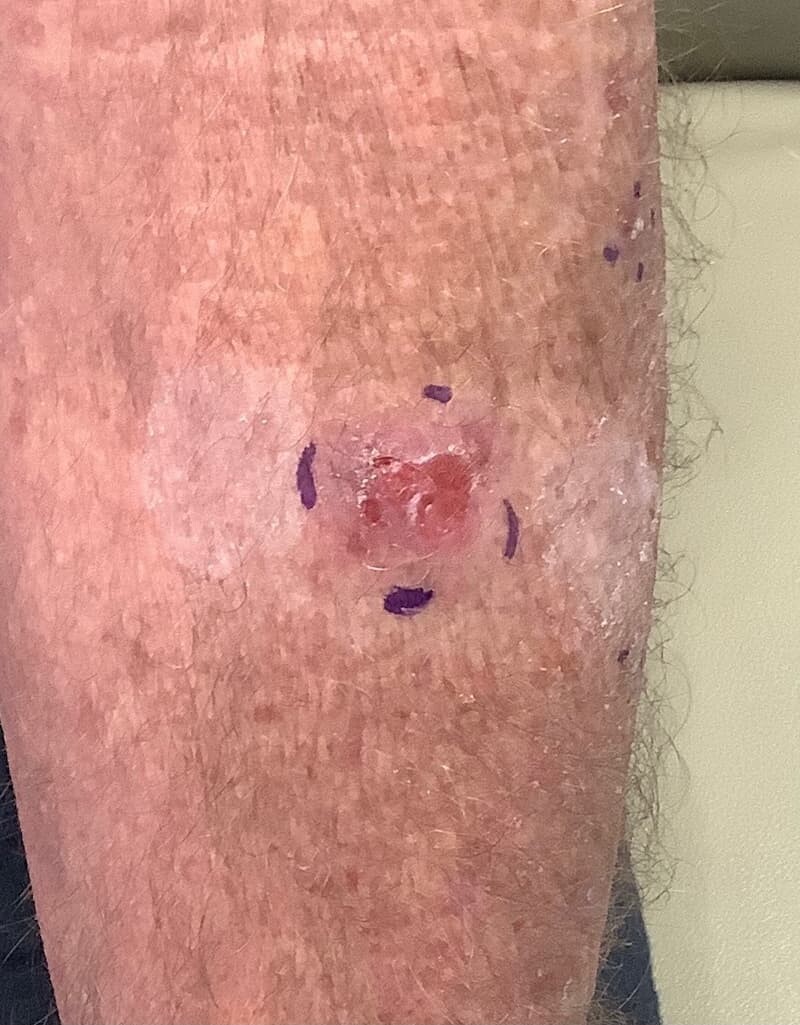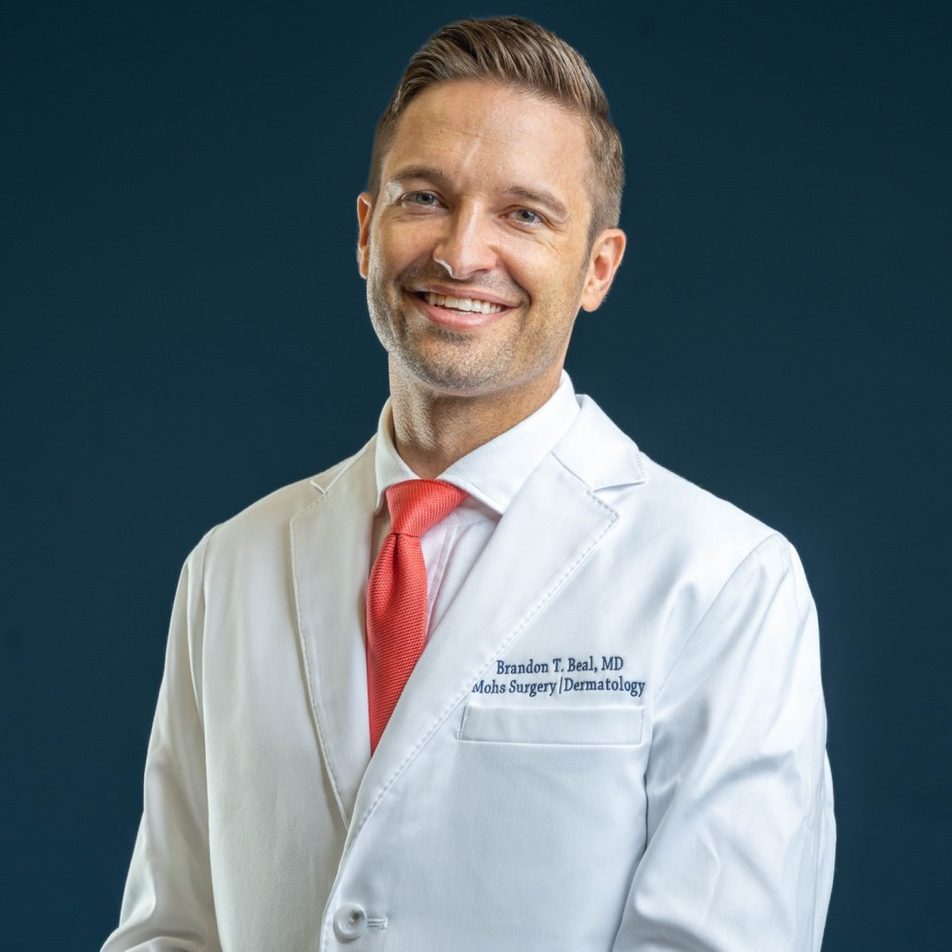Basal Cell Carcinoma Treatment
Learn about basal cell carcinoma, its causes, symptoms, and treatment options. Discover how early detection and effective treatments can ensure healthy skin.
What is Basal Cell Carcinoma?
Basal cell carcinoma is the most common skin cancer. Over 4 million new cases of basal cell carcinoma are diagnosed annually.
Basal cell carcinoma is an abnormal growth of the basal cells of your skin. It does not typically spread (metastasize) to other parts of the body. However, basal cell carcinomas never stop growing, so even though they rarely spread, it does not mean they cannot cause death or severe disfigurement if left untreated. Basal cell carcinoma cure rates are 99% when treated early with appropriate treatment.



What Does Basal Cell Carcinoma Look Like?
Basal cell carcinomas most often occur in areas of the skin with frequent sun exposure, such as the face, neck, and ears. However, they can occur in many other areas of the skin. This type of skin cancer often looks like a pimple, a non-healing scab on a sun-exposed body area, or a non-healing ulcer/sore.
Pimples and scratches typically heal within four weeks. Skin cancer does not heal because the cells are abnormal. If you have a non-healing spot or pimple for over 4 weeks, call your dermatologist to have it examined.
It is imperative to note that while these characteristics are some of the most common signs of basal cell carcinoma, there is no substitute for your skin concern being examined in person by a Board-Certified Dermatologist. This is the gold standard for addressing any of your skin concerns. Your Board-Certified Dermatologist will perform a comprehensive examination and is the expert in diagnosing and treating skin cancers.
What Causes Basal Cell Carcinoma?
Most basal cell carcinoma cancers are caused by:
- Cumulative sun exposure over your entire life
- Tanning beds or sunlamps
How is Basal Cell Carcinoma Diagnosed?
Basal cell carcinoma is diagnosed with a skin biopsy. A skin biopsy is a minor procedure in which your dermatologist numbs the area and then takes a sample of your lesion. This sample is examined microscopically for the presence of skin cancer cells. If skin cancer cells are seen, further treatment is required.
What is the Best Treatment for Basal Cell Carcinoma?
The best treatment for basal cell carcinoma depends on several factors: the type of basal cell carcinoma, its location, your health, and any medical conditions. Your dermatologist can assess your skin cancer and develop an individualized treatment plan to meet your goals and specific needs.
When appropriate, Mohs surgery offers the highest cure rate among all treatments. 99% of all basal cell carcinomas can be cured with Mohs Surgery. This technique preserves healthy skin while removing only skin cancer, minimizing scarring, and maximizing your cosmetic outcome. Mohs surgery is the most advanced treatment for basal cell carcinoma.
When is it Appropriate to Treat a BCC with Mohs Surgery?
- If it is located on your face, neck, scalp, hands, feet, or shins (any size or type)
- If it is an aggressive subtype of basal cell carcinoma
- If it is greater than 2 cm (0.78 inches), located anywhere on your body
Mohs Surgery & Mohs Procedure St. Louis
Mohs Micrographic Surgery offers the highest surgical cure rate among all treatments for skin cancer. This technique preserves your normal skin, focusing on removing skin cancer, minimizing scarring, and maximizing your cosmetic outcome. Mohs Micrographic surgery is the most advanced treatment for skin cancer.
Mohs Micrographic Surgery is the only surgical technique that examines 100% of the margins (edges) of the specimen (skin cancer) removed. This means that 100% of the specimen’s side and bottom edges are examined microscopically to confirm that there are no cancer cells at the edges. This provides patients with the highest cure rates, the fewest scars, and the best cosmetic outcomes for their skin cancer.
Brandon T. Beal, MD, is an expert in diagnosing and treating skin cancer. He is a Double Board-Certified Mohs Surgeon and Dermatologist, a fellowship-trained Mohs Micrographic Surgeon, a dermatologic oncologist (cancer doctor of the skin), and a plastic facial reconstructive surgeon.
Dr. Beal completed his dermatology residency at the Cleveland Clinic Dermatology & Plastic Surgery Institute and his fellowship in Mohs Micrographic Surgery, dermatologic oncology, and facial plastic and reconstructive surgery at Zitelli & Brodland, PC. Dr. Beal trained at the Cleveland Clinic’s Melanoma program, a multidisciplinary team of dermatopathologists, pathologists, dermatologists, and surgical, medical, and radiation oncologists.
Dr. Beal provides each patient with comprehensive counseling on the diagnosis and treatment of skin cancer, a thorough head-to-toe skin examination, and an individualized treatment plan based on evidence-based medicine. Dr. Beal is an expert in Mohs Micrographic Surgery (Mohs Surgery), which is the treatment that provides the highest cure rates, greater than 99% for most skin cancers. He follows the National Comprehensive Cancer Network Guidelines and the American Joint Committee on Cancer staging guidelines.


GET IN TOUCH

